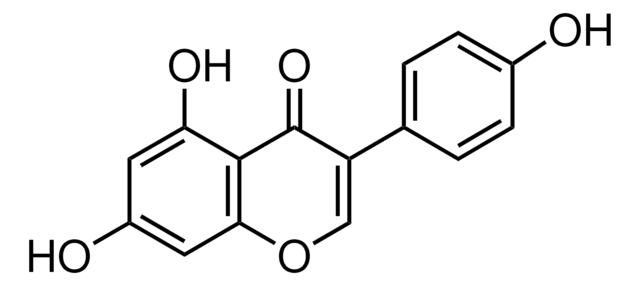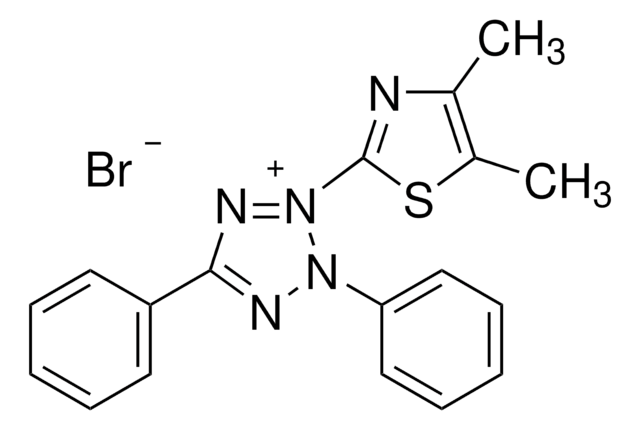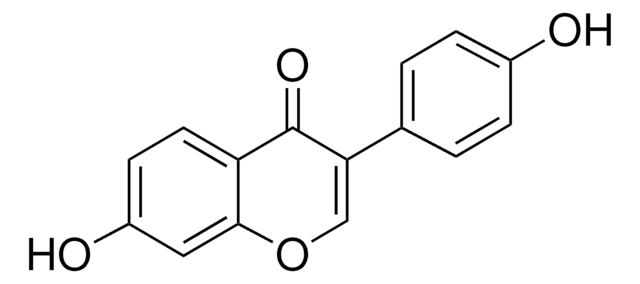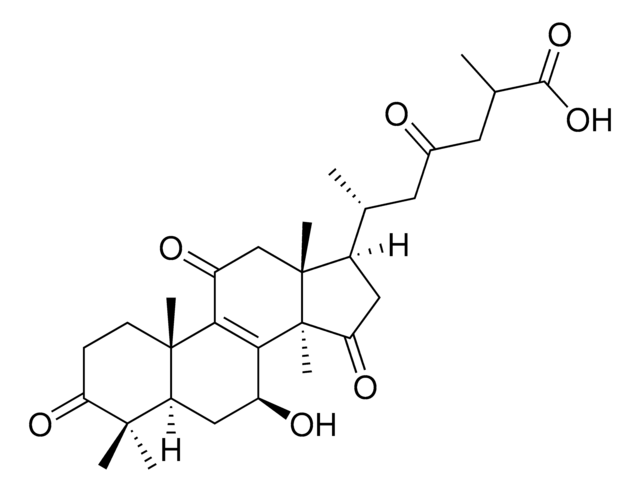SRP2160
Vitamin D Receptor human
recombinant, expressed in insect cells, ≥70% (SDS-PAGE)
Synonym(s):
NR1I1
Sign Into View Organizational & Contract Pricing
All Photos(1)
About This Item
UNSPSC Code:
12352200
NACRES:
NA.26
Recommended Products
biological source
human
recombinant
expressed in insect cells
Assay
≥70% (SDS-PAGE)
form
frozen liquid
mol wt
~50.1 kDa
packaging
pkg of 5 μg
storage condition
avoid repeated freeze/thaw cycles
concentration
500 μg/mL
color
clear colorless
NCBI accession no.
UniProt accession no.
shipped in
dry ice
storage temp.
−70°C
Gene Information
human ... VDR(7421)
General description
VDR (vitamin D receptor) or vitamin D3 receptor, is a member of the steroid and thyroid hormone receptors superfamily of trans-acting transcriptional regulatory factors. It is an intracellular polypeptide of 50-60kDa. This receptor is composed of a highly conserved cysteine, lysine, and arginine-rich DNA-binding domain, and a hydrophobic ligand-binding domain in its C-terminal. It shares size and sequence similarity to thyroid hormone receptor. VDR gene is localized to human chromosome 12q12–q14.
Biochem/physiol Actions
The vitamin D endocrine system is critical for the proper development and maintenance of mineral ion homeostasis and skeletal integrity. Beyond these classical roles, recent evidence suggests that the bioactive metabolite of vitamin D, 1,25-dihydroxyvitamin D3, functions in diverse physiological processes, such as hair follicle cycling, blood pressure regulation, and mammary gland development. The biological effects of 1,25-(OH)2D3 are mediated through the vitamin D receptor (VDR), a member of the nuclear receptor superfamily of ligand-activated transcription factors. The cellular effects of VDR signaling include growth arrest, differentiation and/or induction of apoptosis. VDR heterodimerizes with RXR and the liganded VDR-RXR heterodimer binds with high affinity to vitamin D response elements (VDREs) in the promoters of target genes. In addition, several nuclear receptor coactivators (SRC-1, DRIP) have been shown to interact with VDR and potentiate its transcriptional activity. In addition to treating disorders of mineral metabolism and diseases of the skeleton, such as rickets, osteoporosis, and renal osteodystrophy, VDR and 1,25-(OH)2D3 have significant therapeutic potential for pathologies such as cancer, autoimmune syndromes, and psoriasis.
VDR (vitamin D receptor) binds with its ligand 1a,25-dihydroxyvitamin D3 [1,25(OH)2D3] or vitamin D3, and act upon the target cell nuclei to induce various biological effects. Vitamin D3 is also thought to have immunomodulatory effects, and the rs10735810 VDR gene polymorphism is linked with pertussis. This variant might thus, affect the immune response and clinical outcome of Bordetella pertussis infection.
Physical form
Clear and colorless frozen liquid solution
Preparation Note
Use a manual defrost freezer and avoid repeated freeze-thaw cycles. While working, please keep sample on ice.
Storage Class Code
10 - Combustible liquids
WGK
WGK 1
Flash Point(F)
Not applicable
Flash Point(C)
Not applicable
Choose from one of the most recent versions:
Certificates of Analysis (COA)
Lot/Batch Number
Don't see the Right Version?
If you require a particular version, you can look up a specific certificate by the Lot or Batch number.
Already Own This Product?
Find documentation for the products that you have recently purchased in the Document Library.
Cloning and expression of full-length cDNA encoding human vitamin D receptor.
Baker AR
Proceedings of the National Academy of Sciences of the USA, 85, 3294-3298 (1988)
Association of Vitamin D Receptor Polymorphism with Susceptibility to Symptomatic Pertussis.
Han WG
PLoS ONE, 11 (2016)
Association Between VDR FokI Polymorphism and Intervertebral Disk Degeneration.
Zhao J
Genomics, Proteomics & Bioinformatics, 13, 371-376 (2015)
Amelia L M Sutton et al.
Molecular endocrinology (Baltimore, Md.), 17(5), 777-791 (2003-03-15)
The vitamin D endocrine system is critical for the proper development and maintenance of mineral ion homeostasis and skeletal integrity. Beyond these classical roles, recent evidence suggests that the bioactive metabolite of vitamin D, 1,25-dihydroxyvitamin D3, functions in diverse physiological
Brown, A.J., et al.
The American Journal of Physiology, 277-277 (1999)
Our team of scientists has experience in all areas of research including Life Science, Material Science, Chemical Synthesis, Chromatography, Analytical and many others.
Contact Technical Service



